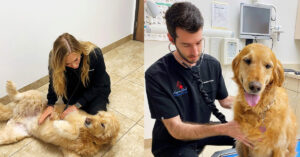Pet ear issues are common ailments among both cats and dogs. Changes in weather and season often trigger itchy problematic ears. Here’s some advice for pet ear issues I commonly see:
What most pet owners and many veterinarians overlook is that an ear infection is quite often secondary to another, primary problem. Most often that primary problem is an allergic reaction (usually a food allergy or inhalant allergic reaction) that creates inflammation and additional discharge within the ear canal. That environment is a perfect breeding ground for organisms to grow and create the ear infection. Many of these organisms (usually bacteria and/or yeast) live in small numbers within the ear canal normally, but under the conditions that the allergies create, they multiply exponentially.
There are some infections that might develop without the underlying allergic reaction, but are much lower in incidence. One infection many pet owners refer to is ear mites. We do see occasional ear mite infections, but the typical case is a new puppy or kitten, usually from the pet store or shelter. They can transmit to other pets in the family, but usually through immediate contact with each other, such as sleeping together.
Treatment of pet ear issues require a multi-faceted approach:
1. Identification of the causative agent, whether yeast, bacterial or mites. Sometimes bacterial culture must be done with resistant infections
2. Cleaning of the discharge that has accumulated within the canal. This would necessitate proper flushing and irrigating of the canal to remove discharge deep within the canal and use of an appropriate cleanser that would liquify the discharge for removal yet not irritate the already-inflamed ear canal.
3. Treatment with the appropriate antibiotic or antifungal medication
4. Treatment or removal of any, underlying, allergic reaction. This might involve anti inflammatory injections, a food trial, or in severe cases, a referral to a veterinary dermatologist for allergy testing and identification of offending allergens.
The first step is to have the ear evaluated so that the appropriate treatments are initiated. Then, ongoing attention is required to keep the ear clean and prevent more pet ear issues – particularly discharge from building up that can be a medium for the infections to grow. If the underlying cause can be identified, the frequency and severity of the ear infections is dramatically reduced.
If you have any questions please feel free to call (949) 464-1000 or schedule an appointment here.
Remember, investing in discovering the underlying pet ear issue, rather than just treating the symptoms upfront, will save you money and your pet from continual pain and suffering in the long run!


